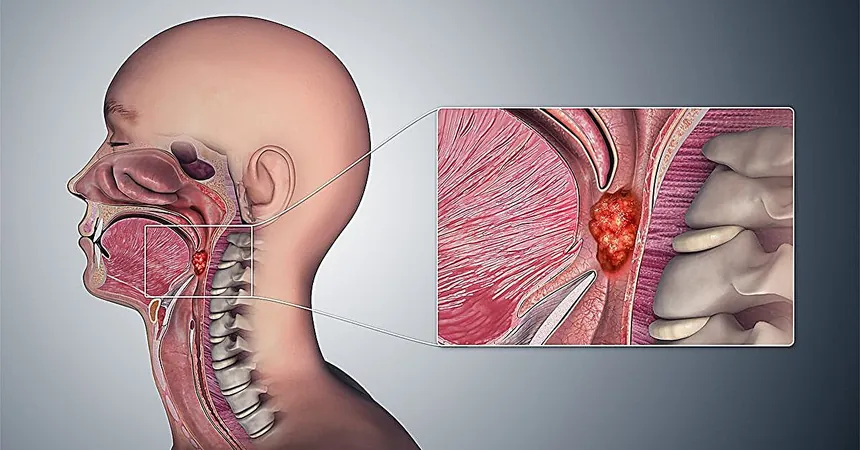
Groundbreaking Discovery: How HPV DNA Fuels Oropharyngeal Tumor Growth
2025-04-17
Author: Ming
Rising Threat: HPV and Oropharyngeal Cancers
The alarming rise in oropharyngeal cancers linked to Human Papillomavirus (HPV)—tumors that develop in the back of the mouth and throat—has raised concerns among medical experts. While early detection can lead to high survival rates, around 20% of patients still face a grim prognosis.
The Role of Extrachromosomal DNA (ecDNA) in Tumor Growth
Recent research from UC San Diego reveals a shocking twist: HPV DNA interacts with human genes in oropharyngeal cancer cells, creating a form of extrachromosomal circular DNA (ecDNA) that fuels tumor progression. This groundbreaking study, recently published in *Nature Communications*, highlights how this hybrid DNA eludes the immune system and drives cancer development.
What is ecDNA?
Extrachromosomal DNA exists as small, circular segments outside the main genome and is commonly found in various cancer types. Previous findings indicated that about 30% of HPV-positive oropharyngeal cancers contain ecDNA formed by the fusion of HPV and human genes. The current study aimed to decode how this hybrid ecDNA expands the malignancy of oropharyngeal cancers.
Uncovering the Secrets of Hybrid ecDNA
Using advanced methodologies, the researchers examined gene expression shifts caused by this hybrid ecDNA. They discovered novel HPV and human DNA enhancers that escalate the activity of cancer-promoting genes, leading to enhanced viral production and accelerated tumor growth.
A Silver Lining: Targeting Tumor Growth with CRISPR
This research opens up exciting new avenues for treatment. By employing CRISPR gene editing technology, scientists successfully targeted these enhancers, diminishing their activity and stalling growth in HPV-positive oropharyngeal tumors. Takuya Nakagawa, the study's lead author, emphasizes the potential of these findings to benefit patients with bleak prognoses.
Next Steps: Evolving Therapies for HPV-related Cancers
Targeting tumors harboring ecDNA with specialized therapies poses a promising approach that preserves healthy cells. Joseph Califano, a senior author of the study, mentioned the development of various drugs specifically designed to attack cancers reliant on ecDNA for survival. His lab is working diligently to identify the most effective treatments for both general and hybrid ecDNA.
Conclusion: A New Hope in Cancer Treatment
As scientists continue to explore the intricate relationship between HPV and oropharyngeal cancers, the research marks a significant step forward in understanding the mechanisms driving tumor growth, ultimately paving the way for innovative therapies that directly target this hidden enemy.



 Brasil (PT)
Brasil (PT)
 Canada (EN)
Canada (EN)
 Chile (ES)
Chile (ES)
 Česko (CS)
Česko (CS)
 대한민국 (KO)
대한민국 (KO)
 España (ES)
España (ES)
 France (FR)
France (FR)
 Hong Kong (EN)
Hong Kong (EN)
 Italia (IT)
Italia (IT)
 日本 (JA)
日本 (JA)
 Magyarország (HU)
Magyarország (HU)
 Norge (NO)
Norge (NO)
 Polska (PL)
Polska (PL)
 Schweiz (DE)
Schweiz (DE)
 Singapore (EN)
Singapore (EN)
 Sverige (SV)
Sverige (SV)
 Suomi (FI)
Suomi (FI)
 Türkiye (TR)
Türkiye (TR)
 الإمارات العربية المتحدة (AR)
الإمارات العربية المتحدة (AR)